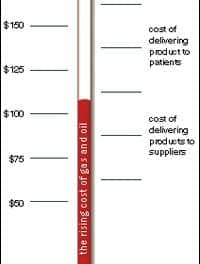Last Updated: 2008-03-18 13:40:43 -0400 (Reuters Health)
NEW YORK (Reuters Health) – Vertebroplasty provides significant and sustained back pain relief, increased mobility and improved quality of life for patients with osteoporotic spinal compression fractures refractory to conservative medical treatment, according to the results of a 5-year follow-up study.
Dr. Giovanni Carlo Anselmetti, an interventional radiologist at the Institute for Cancer Research and Treatment in Turin, Italy reported these findings Tuesday at the 33rd annual meeting of the Society of Interventional Radiology in Washington, DC.
Among 884 osteoporotic patients (750 women, 134 men; mean age 73 years) who underwent percutaneous vertebroplasty on 3954 vertebrae in 1022 sessions, 845 (95.6%) reported back pain improvement. The procedure, performed with local anesthesia and under fluoroscopy, involves placement of bone cement into the collapsed or partially collapsed vertebrae.
The average pain score on the 11-point Visual Analog Scale fell significantly from a pre-treatment score of 7.9 to an average score of 1.3 after vertebroplasty, Dr. Anselmetti reported.
Scores on the Oswestry Disability Questionnaire improved from an average of 69.3% before treatment to 18.8% one month after vertebroplasty, showing a highly significant improvement in mobility (p < 0.0001).
During follow-up, clinical review and imaging studies revealed a new vertebral fracture in 106 patients (12%). In 73 patients, the new fractures were located in the contiguous vertebra. The new fractures occurred 15 days to 36 months (mean, 9.4 months) after vertebroplasty and all of them were "successfully retreated" with vertebroplasty, Dr. Anselmetti reported.
The radiologist noted that the new fracture rate appears to be similar to the rates reported in the literature for osteoporosis patients who are not treated with percutaneous vertebroplasty.
Vertebroplasty was completed in all patients without any major complications. Twelve patients (1.4%) developed asymptomatic pulmonary embolism and 6 (0.7%) had nerve root irritation successfully treated by local steroid injection.
"Our data suggest that vertebroplasty should always be proposed to patients when conservative medical treatment fails," Dr. Anselmetti concluded.
Copyright Reuters 2008. Click for Restrictions




